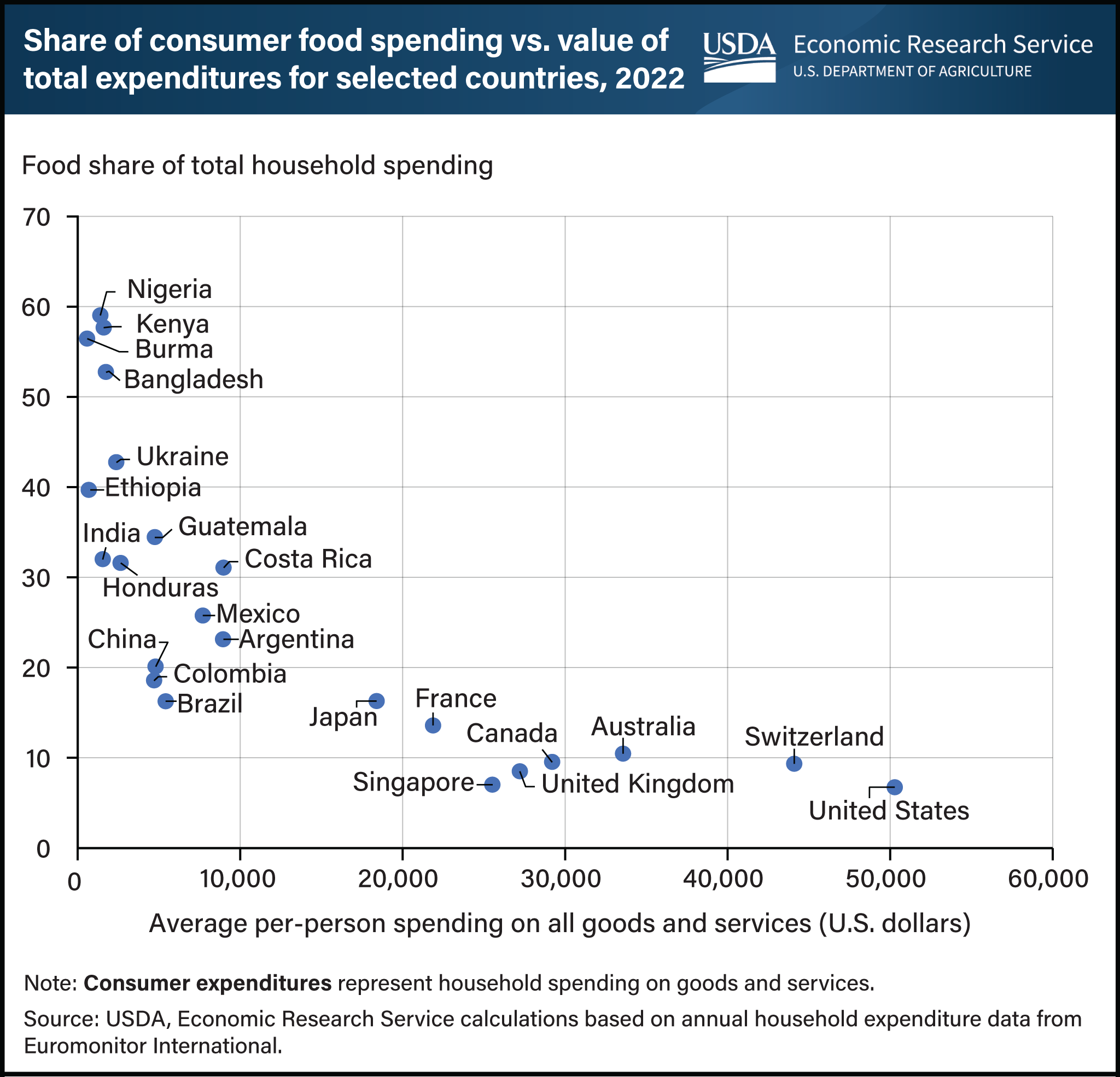Lower income countries spend much higher share of expenditures on food than higher income countries
- by Constanza Valdes
- 9/28/2023

Consumers in low-income countries spend a greater proportion of their budgets on food than those in higher income countries. As incomes rise with economic development and urbanization, the share of income spent on food tends to fall while discretionary spending on household goods, education, medical services, and recreation tends to increase. In low-income African and South Asian countries, spending on food accounted for more than 40 percent of total consumer expenditures in 2022. In Nigeria, Kenya, Burma, and Bangladesh, more than 50 percent of consumer spending went toward food. In the Latin American countries of Costa Rica, Honduras, and Guatemala, spending on food accounted for more than 30 percent of total consumer spending. This contrasts with higher income economies in Latin America, including Argentina, Colombia, and Mexico, where an average of about 22.5 percent of budgets was spent on food. In emerging markets such as Brazil, India, and China, where incomes are rising, the share of discretionary income spent on nonfood categories has increased. In higher income economies, including the United States, Switzerland, Australia, and Canada, disposable incomes remain larger and the food share of consumer expenditures is smaller than those in countries where urban communities are still expanding. This chart is drawn from the USDA, Economic Research Service topic page International Consumer and Food Industry Trends.


